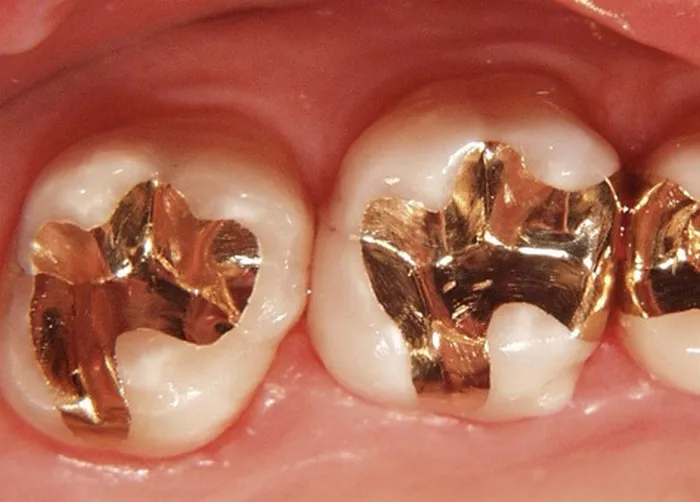Gold fillings are a well-known and durable option for dental restorations. They are commonly used to repair cavities and damaged teeth. Gold has been a popular material for fillings due to its strength, durability, and aesthetic qualities. In this article, we will explore what gold fillings are, their benefits, the procedure for getting them, and how they compare to other types of fillings.
What Are Gold Fillings?
Gold fillings are made from a mixture of gold, copper, and other metals, providing a strong and durable solution for filling cavities. The high-quality gold used in fillings is often combined with other metals to enhance its durability and resistance to wear. This unique combination ensures that gold fillings can withstand the constant pressure and friction from chewing and biting.
Why Choose Gold Fillings?
There are several reasons why patients may opt for gold fillings over other materials. Some of the most significant benefits include:
Durability: Gold fillings are known for their longevity and ability to resist wear. With proper care, they can last for many years, even decades.
Strength: The material is very strong, making it an excellent choice for back teeth that experience a lot of pressure when chewing.
Biocompatibility: Gold is a biocompatible material, meaning it is unlikely to cause any allergic reactions or irritation to the surrounding tissue.
Aesthetic Appeal: While gold fillings are noticeable due to their color, many patients appreciate the traditional and timeless look of gold.
Resistant to Staining: Unlike composite fillings, gold is less likely to stain or discolor over time.
Gold Fillings vs. Other Types of Fillings
When it comes to choosing a material for a filling, patients have several options, each with its own advantages and disadvantages. Some of the most common alternatives to gold fillings include:
Amalgam Fillings
Amalgam fillings are made from a mixture of metals, including silver, mercury, and other elements. They are strong and durable but are not as aesthetically pleasing as gold or composite fillings due to their dark color.
Composite Fillings
Composite fillings are made from a tooth-colored resin material. They are ideal for cavities in visible areas of the mouth, offering a more natural look. However, composite fillings are not as durable as gold or amalgam, and they may wear down more quickly, especially in back teeth.
Ceramic Fillings
Ceramic fillings are made from porcelain, providing a strong and aesthetic alternative to gold. While they mimic the color of natural teeth, they may not last as long as gold and can be more prone to chipping.
The Gold Filling Procedure
The process of getting a gold filling involves multiple steps. Your dentist will start by numbing the area around the cavity to ensure that you do not feel any discomfort during the procedure. Once the area is numb, the decayed portion of the tooth will be removed.
After the cavity is cleaned, your dentist will take an impression of the tooth. This impression will be used to create a custom-made gold filling that fits the shape and size of the cavity. The gold filling is then crafted in a dental laboratory, and once it is ready, your dentist will bond it to your tooth, ensuring that it fits securely and comfortably.
Gold fillings require at least two visits to the dentist: one for the impression and another to place the filling. Some patients may also experience a brief period of adjustment as they get used to the feeling of the gold filling in their mouth.
How Long Do Gold Fillings Last?
Gold fillings are among the most durable filling materials available. With proper care, they can last 20 years or more. Unlike other materials, gold is resistant to cracking and breaking, which makes it a long-lasting solution for dental restorations.
Maintaining Gold Fillings
While gold fillings are durable, they still require proper oral hygiene to ensure their longevity. Brushing and flossing regularly, along with routine dental check-ups, will help to keep your gold fillings in good condition. Additionally, avoiding excessive pressure on your teeth, such as grinding or biting hard foods, can help preserve the filling.
Are Gold Fillings Right for You?
Gold fillings are an excellent choice for many patients, especially those who want a long-lasting, durable, and biocompatible option for their dental restoration. However, they may not be suitable for everyone. Factors such as the location of the cavity, your aesthetic preferences, and your budget may influence your decision.
If you are unsure whether gold fillings are right for you, it is always a good idea to consult with your dentist. They will be able to evaluate your oral health and help you choose the best material for your needs.
Conclusion
Gold fillings are a time-tested and reliable option for repairing damaged or decayed teeth. Their strength, durability, and aesthetic qualities make them a popular choice for many patients. While they may be more expensive than other types of fillings, their longevity and resistance to wear can make them a worthwhile investment in your dental health. If you are considering gold fillings, be sure to consult with your dentist to determine if this material is the best choice for you.
Related topics:

